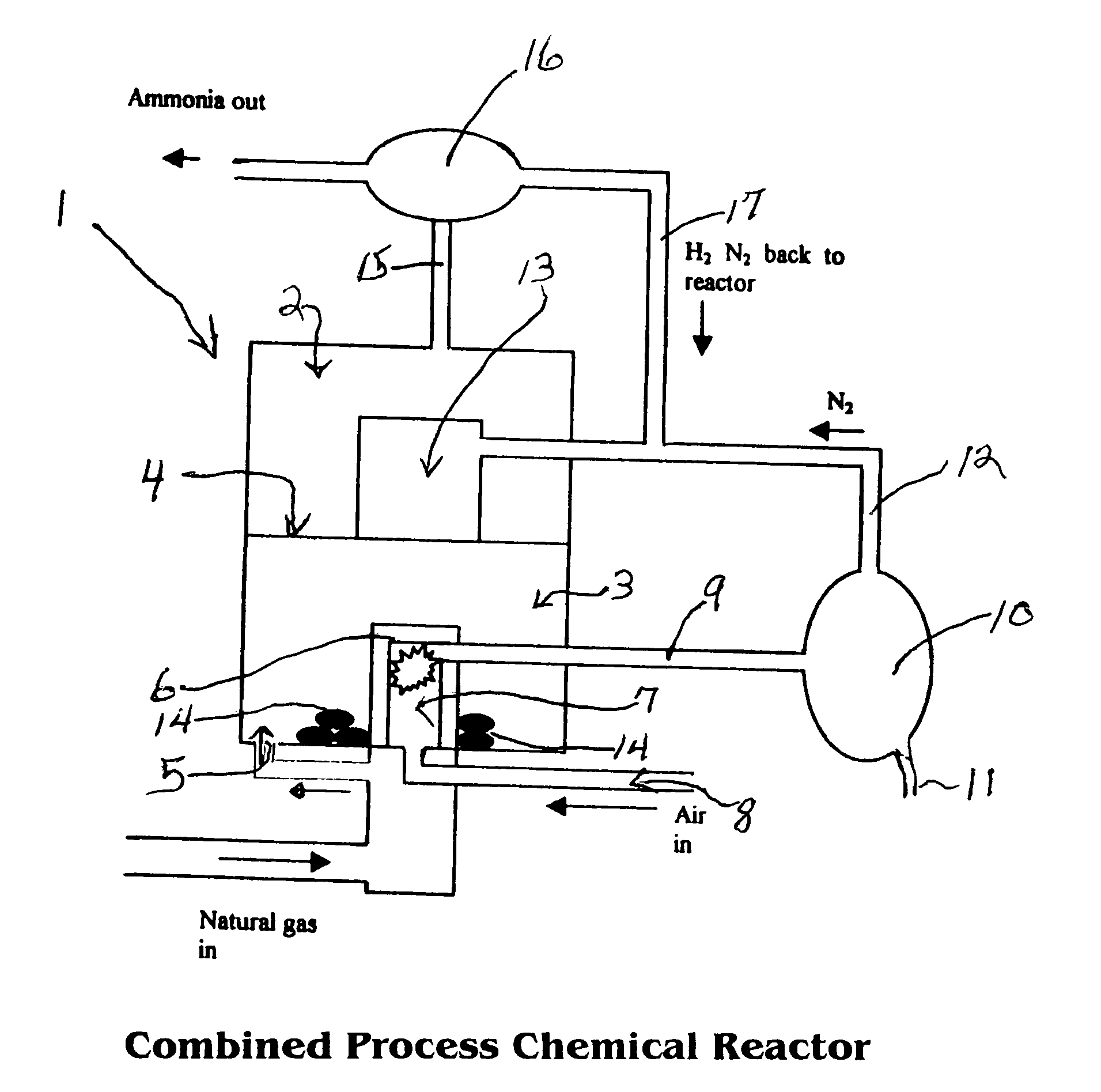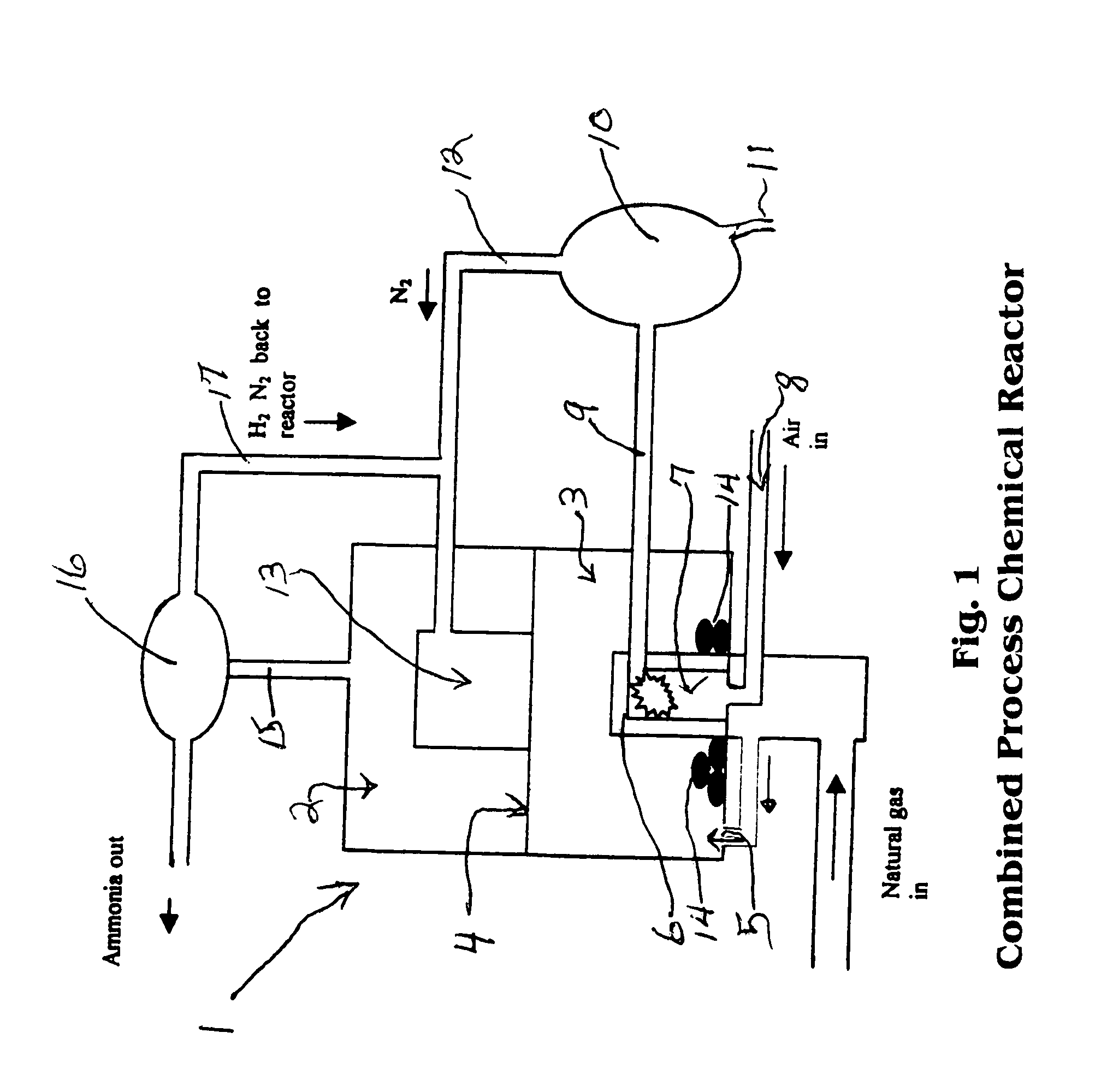Combined methane decomposition and ammonia formation cell
a technology of ammonia formation cell and methane decomposition, which is applied in the direction of chemical/physical/physical-chemical processes, chemical apparatuses and processes, physical/chemical process catalysts, etc., can solve the problems of low conversion efficiency, deficiency of respective apparatuses, and low use of thermal decomposition. , to achieve the effect of reducing the need for additional energy supplied from external sources
- Summary
- Abstract
- Description
- Claims
- Application Information
AI Technical Summary
Benefits of technology
Problems solved by technology
Method used
Image
Examples
Embodiment Construction
[0033]Before explaining the disclosed embodiment of the present invention in detail, it is to be understood that the invention is not limited in its application to the details of the particular arrangement shown since the invention is capable of other embodiments. Also, the terminology used herein is for the purpose of description and not of limitation.
[0034]The invention disclosed herein in summary encompasses a device and process for converting natural gas to carbon plus ammonia in a single reactor vessel utilizing a natural gas input flow catalyzed to strip hydrogen and carbon from it in the first process and thereafter utilizing the Haber-Boesch process as the second process step in said vessel to provide ammonia in an exothermic step where the resulting heat is recycled to the endothermic first process.
[0035]The method of the invention is based on the thermal decomposition of natural gas into hydrocarbons, preferably hydrogen, and then by reaction with nitrogen into ammonia in ...
PUM
| Property | Measurement | Unit |
|---|---|---|
| Temperature | aaaaa | aaaaa |
| Pressure | aaaaa | aaaaa |
| Structure | aaaaa | aaaaa |
Abstract
Description
Claims
Application Information
 Login to View More
Login to View More - R&D
- Intellectual Property
- Life Sciences
- Materials
- Tech Scout
- Unparalleled Data Quality
- Higher Quality Content
- 60% Fewer Hallucinations
Browse by: Latest US Patents, China's latest patents, Technical Efficacy Thesaurus, Application Domain, Technology Topic, Popular Technical Reports.
© 2025 PatSnap. All rights reserved.Legal|Privacy policy|Modern Slavery Act Transparency Statement|Sitemap|About US| Contact US: help@patsnap.com


